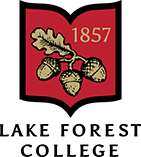Professor of Physics Michael Kash

Education
PhD Massachusetts Institute of Technology, Cambridge Massachusetts, 7/88
BA Lake Forest College, Lake Forest, Illinois, 6/77
Research Interest
Interaction of atoms and electromagnetic fields, atomic structure, laser spectroscopy, quantum optics. Work with single-frequency diode laser systems and thermal atomic beams. Presently studying non-linear optical processes in molecules with femtosecond lasers.
How are you conducting your lab classes during the remote semester?
- Analysis of data taken by the instructor in advance or during the laboratory period. Example: Time of flight of a falling object.
- Exploring computer simulations of physical situations, in which parameters may be easily changed. Example: Physlets showing wave phenomena.
- Construction of devices using common household items. Example: Study projectile motion by throwing a ball and recording the trajectory with a smart phone. Students construct a hanging weight on a string of known length to calibrate the video.
- Use special equipment provided by Lake Forest College. Example: Sensor carts to measure position, velocity, acceleration, and force
The laboratory sections have ten to thirteen students, and therefore students receive individual attention, similar to in-person teaching.
Some students are not able to attend and watch a recording of the session. They can receive asynchronous support via email or Zoom.

